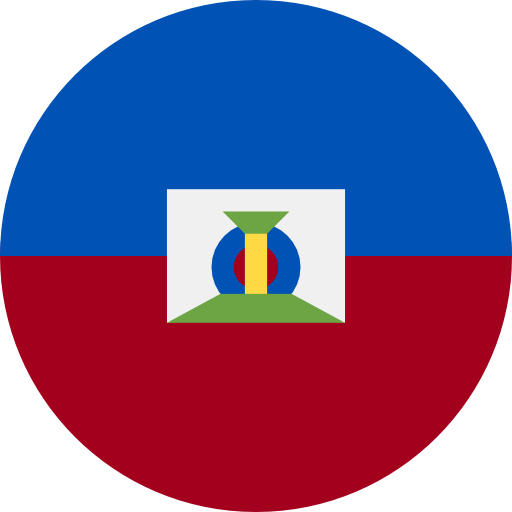About HT

Location
Haiti is a country located on the island of Hispaniola in the Caribbean Sea. It shares the island with the Dominican Republic to the east.
Capital
The capital city of Haiti is Port-au-Prince, which is also its largest city.
Population
As of the latest estimates, Haiti has a population of approximately 11.4 million people.
Area
Haiti covers a total land area of about 27,750 square kilometers (10,714 square miles).
Official Languages
The official languages of Haiti are Haitian Creole and French.
Government
Haiti is a unitary semi-presidential republic with a multi-party system. The President of Haiti serves as the head of state and government, while the Prime Minister is the head of the government.
Religion
The majority of the population in Haiti adheres to Roman Catholicism, with a significant minority practicing Protestantism and other religions.
Economy
Haiti is one of the poorest countries in the Western Hemisphere, with much of its population living in poverty. The economy relies heavily on agriculture, particularly the production of coffee, mangoes, and sugarcane. Remittances from Haitians living abroad also play a significant role in the economy.
History
Haiti was the first independent nation in Latin America and the Caribbean, gaining independence from France in 1804 through a successful slave rebellion led by Toussaint Louverture and Jean-Jacques Dessalines. However, the country has faced political instability, natural disasters, and economic challenges throughout its history.
Culture
Haiti has a rich cultural heritage influenced by African, French, and indigenous Taino traditions. Haitian art, music, dance, and cuisine are vibrant and expressive, with a strong emphasis on spirituality and community.
Natural Disasters
Haiti is prone to natural disasters, including hurricanes, earthquakes, and flooding. The devastating earthquake in 2010 caused widespread destruction and loss of life, further exacerbating the country's challenges.
Tourism
Despite its natural beauty and cultural richness, Haiti's tourism industry is relatively underdeveloped compared to other Caribbean countries. However, efforts are being made to promote tourism and attract visitors to explore its beaches, historical sites, and vibrant culture.

National Items of Haiti
Hibiscus (Rose of Sharon)
The Hibiscus, also known as the Rose of Sharon (Hibiscus syriacus), is the national flower of Haiti. Its vibrant blooms symbolize the beauty and resilience of the Haitian people.
Hispaniolan Trogon
The Hispaniolan Trogon (Priotelus roseigaster) is the national bird of Haiti. With its colorful plumage, this bird represents the country's rich biodiversity and natural heritage.
Royal Palm
The Royal Palm (Roystonea) is the national tree of Haiti. It symbolizes the strength and resilience of the Haitian people and is an important part of the country's landscape.
Soup Joumou
Soup Joumou is a traditional Haitian dish made from pumpkin, vegetables, meat, and spices. It is traditionally eaten on New Year's Day to celebrate Haiti's independence, symbolizing freedom and resilience.
Citadelle Laferrière
Citadelle Laferrière is a large mountaintop fortress in northern Haiti. It symbolizes the country's fight for independence and its historical significance as a symbol of liberty and resistance.
Vodou (Voodoo)
Vodou is a traditional Afro-Haitian religion that blends elements of African, Taino, and Catholic beliefs. It symbolizes the cultural and spiritual heritage of Haiti.
Tap Tap Bus
The Tap Tap bus is a colorful, decorated form of public transportation in Haiti. It symbolizes the vibrant culture and artistic expressions of the Haitian people.
Carnival
Carnival in Haiti is a major cultural event featuring music, dance, and elaborate costumes. It symbolizes the rich cultural heritage and festive spirit of the Haitian people.
Konbit
Konbit is a traditional Haitian practice of communal labor, where community members come together to work on a common project. It symbolizes unity, cooperation, and the collective strength of Haitian society.
Drum
The drum is a central instrument in Haitian music, especially in Vodou ceremonies and traditional celebrations. It symbolizes the cultural and musical heritage of Haiti.

"La Dessalinienne" was adopted as the national anthem of Haiti in 1904. It reflects the spirit of unity, freedom, and patriotism of the Haitian people and pays tribute to their ancestors and the leaders of the Haitian Revolution who fought for independence.
The national anthem of Haiti is called "La Dessalinienne" in French, named after Jean-Jacques Dessalines, one of the leaders of the Haitian Revolution. Here are the lyrics in French along with an English translation:
Pour le Pays, Pour les Ancêtres,
Marchons unis, Marchons unis.
Dans nos rangs point de traîtres,
Du sol soyons seuls maîtres.
Marchons unis, Marchons unis
Pour le Pays, Pour les Ancêtres.
Mars et le Drapeau des Libres
Guide nos pas, Guide nos pas.
Soyons unis, Soyons unis
Nous vaincrons et nous verrons
Libre haïti, Libre haïti
Pour nos frères, pour nos frères.
For the Country, For the Ancestors,
Let us march united, Let us march united.
In our ranks, no traitors,
Let us be the only masters of the soil.
Let us march united, Let us march united
For the Country, For the Ancestors.
March and the Flag of the Free
Guide our steps, Guide our steps.
Let us be united, Let us be united
We will conquer and we will see
Free Haiti, Free Haiti
For our brothers, for our brothers.


